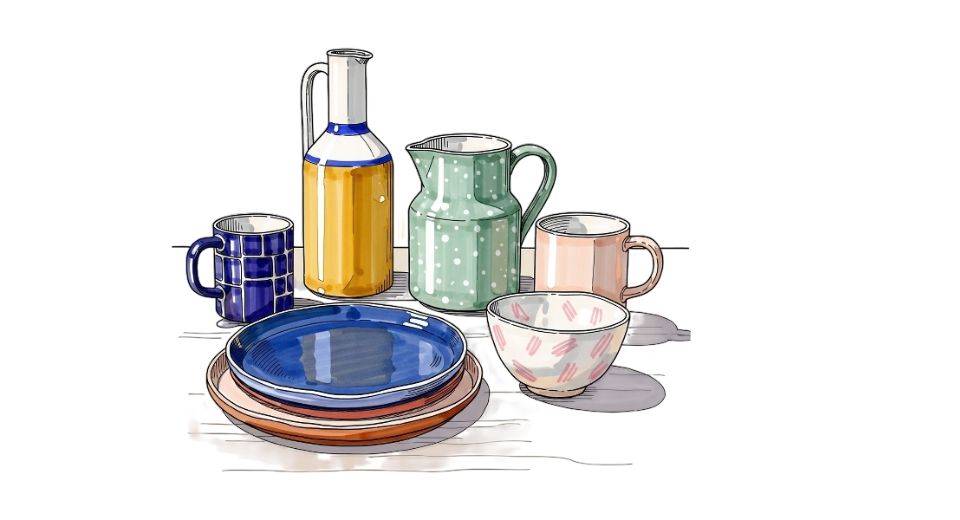
Aug 12, 2025

The fresh report released on the Global Ceramics Tableware Market, authored and released by Metastat Insight, does take a deeper look at an industry that combines craftsmanship, cultural value, and economic acumen. This market isn't just about serving plates, bowls, cups, and serving dishes to make and sell; it's the result of centuries of history, modern design philosophies, and the subtle shift in people's tastes that continue to redefine its essence. The report findings recognize how tableware is increasingly not only considered practical dishes for serving food, but a part of the complete sensory and visual dining experience. This union of art and everyday life has made ceramics tableware a center of appeal for household consumption, hospitality industry, and collectors alike. One of the most notable consequences of the study is diversity in design aesthetics thriving across regions.
From the simplicity of Scandinavian lines to the extremely detailed East Asian porcelain motifs, the market offers a range of visual languages that resonate with varying emotional and cultural sensibilities. Such diversity makes the tableware ceramics market continuously dialogue with larger lifestyle and design trends. It also promotes interaction among experienced artisans, new designers, and mass manufacturers all contributing to the dynamism of the industry. This leads to a regular flow of new collections, seasonal introductions, and heritage reissues that keep things interesting between both repeat customers and first-time buyers. The report also indicates how innovation in materials has influenced the nature of products in the Global Ceramics Tableware Market. Though simple clay recipes continue to be the norm, new firings, new glaze conception, and composite ceramic materials are on the scene.
These advances enable lighter but stronger work, along with greater colour, finish, and texture latitude. This is not merely a technological shift; it is an aesthetic evolution which encourages designers to go forward without losing the timelessness of human touch. This combination of technological innovation and hand-painted uniqueness holds out the promise of ceramics tableware its own special beauty in a more industrialised world. Consumer interaction with ceramics tableware has also been transformed, with higher interest in the history behind each piece. Whereby the source of raw material, environmental impact of production, and heritage of the craftspeople are now a part of the story that informs buying. Metastat Insight's research indicates that shoppers are increasingly interested in tableware with an identity either regional origin, family-owned atelier, or design philosophy centered on sustainability. The trend has led to brands investing in narrative and transparency as an integral part of their market presence.
Hospitality segments across the world have served to prop up the global market penetration of ceramics tableware. Restaurants, boutique hotels, and catering establishments are increasingly considering tableware an expression of their brand personality. A carefully selected dinner plate or coffee cup can enhance the tone of an establishment by subtly conveying its values and personality. The demand for custom pieces specifically designed for the hospitality industry has introduced new territory for collaborative efforts between owners and designers, leading to innovative lines that establish a border between functional items and carefully selected décor. Distributive channels as well as trade channels have been drastically altered.
Web sites have made ceramic artists and small producers accessible to consumer bases not reached earlier via traditional consumer channels. This online presence puts catalogues, customisation and brand histories into consumers' browse reach everywhere in the world, bringing global design direction into homes throughout the country. And alongside, classic retail persists, providing touch-and-feel which can't be totally replicated electronically. This two-for-one distribution strategy underscores the flexibility of the ceramics tableware industry to established and changing consumer lifestyles. Seasonal and cultural events provide further momentum to the business.
Weddings, celebratory periods, and festive festivities have the potential to induce limited series issues and thematic packaging. The events provide brands with scope to try new colours, motifs, and packaging that appeal to the emotional connection of the time. The exercise is not merely to spur short-term business but to build brand memory, making connections that extend far longer than the celebratory period itself. For all the omnipresent presence and diversity of appearances of the ceramics tableware marketplace, there is still a personal dimension to it. Whether bought for everyday use, exchanged as a symbol of concern, or invested in as an art form, every piece will gradually acquire private human moments dinner gatherings around it, parties marked by it, and habits practiced by it.
This intangible aspect is one of the reasons why tableware ceramics is so perpetually popular even in a time when other products and mass-produced items are within easy reach. The Global Ceramics Tableware Market, as illustrated by the recent Metastat Insight report, is a prime example of the convergence of art, culture, and contemporary commerce. It is a company that is fueled by diversity, evolves to meet shifting consumer demands, and creatively reimagines its product without sacrificing its well-tested traditions. By the collaborative power of imagination and genuineness, it can be both utilitarian and aesthetic in purpose and hence continue to be relevant to several cultures and lifestyles.
Drop us an email at:
Call us on:
+1 214 613 5758
+91 73850 57479